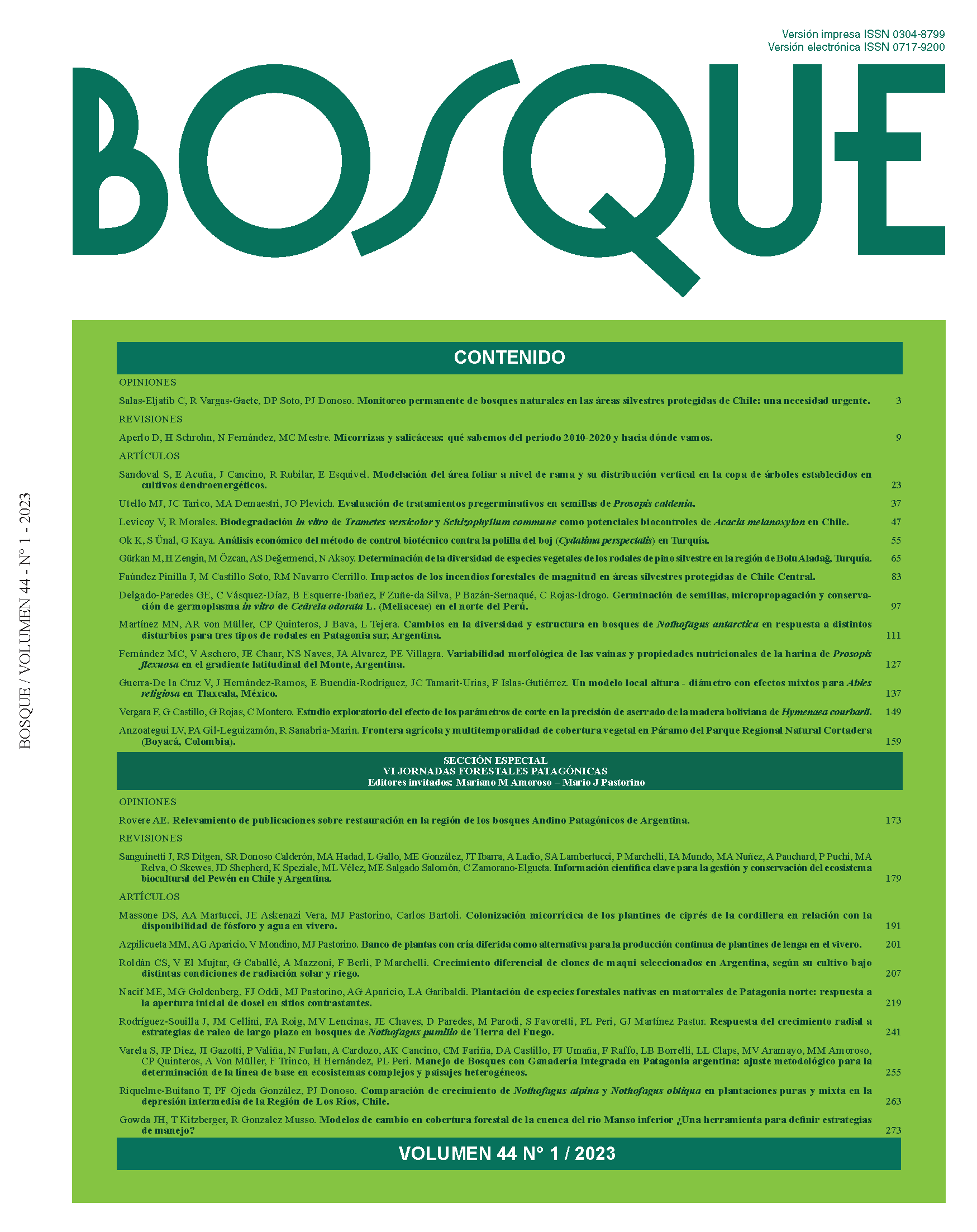Mycorhizae and Salicaceae: What we have learned from 2010-2020 and what comes next
Main Article Content
Abstract
Populus and Salix species (Salicaceae) are widely distributed, either naturally or on plantations, in different regions of the world. Salicaceae species usually establish beneficial mutualistic associations with arbuscular mycorrhizal and ectomycorrhizal fungi, which can be used as biotechnological tools. In this work, a review of all studies published between 2010 and 2020 that addressed the occurrence of mycorrhizae in Populus and Salix was carried out using the Mendeley platform, in order to highlight its importance in the last decade and on a global scale. A total of 100 publications were reviewed, 77 on Populus, 17 on Salix, and six dealing with species of both genera. The finding that a higher number of studies were focused on Populus could be related with a higher interest in these species, since they have higher commercial value as compared to Salix species. The most studied hybrid species were Populus tremuloides, P. deltoides, Salix dasyclados and S. caprea. Ninety-seven percent of studies were carried out in the northern hemisphere, possibly because it corresponds to the natural distribution area of these species. The number of studies concerning the independent analyses of arbuscular mycorrhizae (42) and ectomycorrhizae (45) was similar, and only a few addressed both mycorrhizal types simultaneously. Based on our results, two main research gaps were identified: 1) the study of mycorrhizae in Salicaceae species in the southern hemisphere, and 2) the simultaneous study of arbuscular mycorrhizae and ectomycorrhizae in Salicaceae worldwide.

